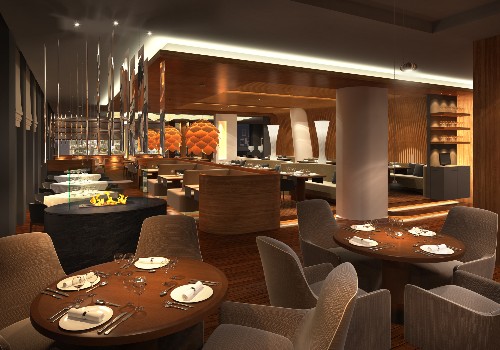When designing a restaurant, one crucial element to consider is the selection of materials for your tables. Restaurant tables not only serve a functional purpose but also contribute to the overall aesthetic appeal of the space.
The right choice of materials can enhance the dining experience, provide durability, and align with your restaurant’s theme and brand. In this article, we will explore various materials to consider for your restaurant tables and their unique characteristics.
Table of Contents
Wood:
Wood is a timeless and versatile material commonly used in restaurant table construction. It exudes warmth, elegance, and natural beauty, making it a popular choice among restaurateurs.
Wood tables can be crafted from a wide range of species, such as oak, maple, walnut, or teak, each with its distinct grain pattern and color variations.
Wood tables can be finished with stains, varnishes, or paints to match your restaurant’s style. While wood offers a classic look, it is essential to choose a hardwood variety that is resistant to scratches, spills, and heat to ensure longevity.
Laminate:
Laminate tables provide a cost-effective and durable option for restaurants. They are constructed by pressing layers of paper or fabric with a resin coating onto a composite wood base.
Laminate tables are available in various designs, patterns, and colors, allowing for customization to complement your restaurant’s décor.
They are highly resistant to stains, scratches, and heat, making them suitable for high-traffic areas. Additionally, laminate tables are easy to clean and maintain, making them ideal for busy restaurant environments.
Stainless Steel:
If you’re aiming for a contemporary or industrial-themed restaurant, stainless steel tables can be an excellent choice. Stainless steel is known for its sleek appearance, durability, and resistance to corrosion.
These tables are easy to clean and sanitize, making them hygienic for food establishments. Stainless steel tables can be paired with other materials like wood or glass to create a visually appealing contrast.
However, it is important to note that stainless steel surfaces may show fingerprints and smudges more prominently, requiring regular cleaning.
Glass:
Glass tables can create an elegant and sophisticated ambiance in your restaurant. They offer a modern and open feel while allowing light to pass through, making the space appear brighter and more spacious.
Glass tables come in various thicknesses and finishes, such as clear, frosted, or tinted options. While glass can be fragile and prone to scratches, tempered glass is a safer alternative, as it is more resistant to breakage.
It is advisable to pair glass tops with sturdy bases for added stability and security.
Concrete:
For an industrial or rustic-themed restaurant, concrete tables can be an intriguing choice. Concrete provides a unique and contemporary aesthetic, with its raw and minimalist appeal.
It can be molded into various shapes and sizes, allowing for customization. Concrete tables are durable, resistant to heat and stains, and can withstand heavy use.
However, they require proper sealing and maintenance to prevent moisture absorption and staining.
Composite Materials:
Composite materials, such as fiberglass or resin, offer a blend of durability and design versatility. These materials can mimic the look of natural materials like wood, stone, or metal while providing additional benefits.
They are lightweight, easy to clean, and resistant to stains and scratches. Composite tables are available in a wide range of colors and finishes, making them suitable for diverse restaurant styles.
Conclusion:
Choosing the right materials for your restaurant tables is crucial for creating a welcoming and functional dining space. Consider the style, durability, maintenance requirements, and budget when making your selection.
Whether you opt for the timeless beauty of wood, the sleekness of stainless steel, or the contemporary appeal of glass, each material brings its own unique charm to your restaurant’s ambiance.
By carefully choosing the right materials, you can ensure that your tables not only withstand the demands of a bustling restaurant but also enhance the overall dining experience for your valued customers.

